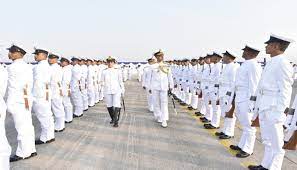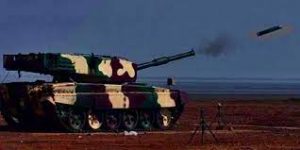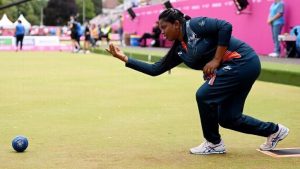Today Current Affairs: 6th August 2022 for UPSC IAS exams, State PSC exams, SSC CGL, State SSC, RRB, Railways, Banking Exam & IBPS, etc
Table of Contents
INAS 314:

Indian Navy’s all-women crew creates history by completing first independent maritime surveillance mission over Arabian Sea.
- Indian Navy’s women officers have created history after they completed the first-ever all-women independent maritime reconnaissance and surveillance mission in the North Arabian Sea onboard a Dornier 228 aircraft.
- The mission was carried out by five officers of the Indian Navy Air Squadron (INAS) 314 based at Naval Air Enclave at Gujarat’s Porbandar.
- The aircraft was captained by the Mission Commander, Lt Cdr Aanchal Sharma, who had pilots, Lt Shivangi and Lt Apurva Gite, and Tactical and Sensor Officers, Lt Pooja Panda and SLt Pooja Shekhawat in her team.
- The INAS 314 is a frontline Naval Air Squadron based at Porbandar, Gujarat.
- This “first-of-its-kind military flying mission” is expected to pave the way for women officers in the aviation cadre to assume greater responsibility and aspire for more challenging roles.
Hasdeo Aranya:

On July 26, the Chhattisgarh Legislative Assembly unanimously passed a private member resolution urging the Centre to cancel allocation of all coal mining blocks in the ecologically sensitive area of Hasdeo Aranya.
- Underneath the Hasdeo Aranya is a coalfield that comprises of 22 coal blocks.
- In 2010, the Centre categorised Hasdeo Aranya to be a “no-go” zone for mining.
- However, only a year later, the MoEF granted clearance for the mining.
- At present, of the 22 blocks, seven blocks have been allotted to different companies.
- The resolution isn’t expected to change the status quo.
- While the Congress says the onus is on the Centre to stop mining, the BJP has been asking the State government to withdraw the clearances it has issued to mine developers and operators.
Laser-Guided Anti-Tank Guided Missiles ATGM:

The indigenously developed Laser-Guided Anti-Tank Guided Missiles ATGM were successfully test-fired from Main Battle Tank MBT Arjun by Defence Research and Development Organisation (DRDO) and Indian Army at KK Ranges with support of Armoured Corps Centre and School Ahmednagar in Maharashtra.
- The missiles hit with precision and successfully destroyed the targets at two different ranges.
- Telemetry systems have recorded the satisfactory flight performance of the missiles.
- The all-indigenous Laser Guided ATGM employs a tandem High Explosive Anti-Tank HEAT warhead to defeat Explosive Reactive Armour ERA protected armoured vehicles.
- The ATGM has been developed with multi-platform launch capability and is currently undergoing technical evaluation trials from 120 mm rifled gun of MBT Arjun.
- Defence Minister Rajnath Singh has complimented DRDO and Indian Army for successful performance of the Laser Guided ATGMs.
AzaadiSAT:

Indian Space Research Organisation (ISRO) will launch its smallest commercial rocket to unfurl Tricolour in space.
- The launch will take place from the Satish Dhawan Space Centre in Sriharikota.
- ISRO chairman S Somanath has called the new satellite a “game changer” that will drive India’s dreams of breaking into the lucrative and booming small satellite launch market.
- On August 15, 2018, Prime Minister Narendra Modi made an announcement that the Tricolour will be unfurled in space during India’s 75th year of Independence.
- To mark country’s celebrations of ‘Azaadi Ka Amrit Mahotsav’, the SSLV will have a co-passenger satellite called ‘AzaadiSAT’ comprising 75 payloads built by 750 young girl students from 75 rural government schools across India.
- This project was specially conceptualised for the 75th Independence Day year celebrations to encourage scientific temper and create opportunities for young girls to choose space research as their career.
Personal Data Protection Bill:

The government has withdrawn the Personal Data Protection Bill from Parliament as it considers a “comprehensive legal framework” to regulate the online space, including bringing separate laws on data privacy, the overall Internet ecosystem, cybersecurity, telecom regulations, and harnessing non-personal data to boost innovation in the country.
- The government has taken this step after nearly four years of the Bill being in the works.
- It had gone through multiple iterations, including a review by a Joint Committee of Parliament (JCP), and faced major pushback from a range of stakeholders including big tech companies such as Facebook and Google, and privacy and civil society activists.
- The tech companies had, in particular, questioned a proposed provision in the Bill called data localisation, under which it would have been mandatory for companies to store a copy of certain sensitive personal data within India, and the export of undefined “critical” personal data from the country would be prohibited.
- The activists had criticised, in particular, a provision that allowed the central government and its agencies blanket exemptions from adhering to any and all provisions of the Bill.
- The delays in the Bill had been criticised by several stakeholders, who had pointed out that it was a matter of grave concern that India, one of the world’s largest Internet markets, did not have a basic framework to protect people’s privacy.
Climate Change Targets For 2030:

India has enhanced its climate change targets for 2030.
- In UNFCCC COP 26 at Glasgow in 2021, the Prime Minister of India had made a series of new promises to strengthen climate action from India.
India’s Revised Targets:
- India is now committing itself to at least 45% reduction in emissions intensity of GDP (emissions per unit of GDP) from 2005 levels.
- The existing target was a 33% – 35% reduction.
- India is also promising to ensure that at least 50% of installed electricity generation capacity in 2030 would be based on non-fossil fuel-based sources.
- This is an increase from the existing 40% target.
Kerala Floods:

Kerala once again stares at a flood-like situation, similar to the one in 2018, with high intensity rain triggered by strong monsoon winds.
- In addition, a low-pressure system is expected to form within 2-3 days over the Bay of Bengal, which is likely to aggravate the rains.
- It is an overflowing of water onto land that is normally dry. Floods can occur during heavy rains, when ocean waves come on shore, when snow melts quickly, or when dams or levees break.
- Damaging flooding may happen with only a few inches of water, or it may cover a house to the rooftop.
- Floods can occur within minutes or over a long period, and may last days, weeks, or longer.
- Floods are the most common and widespread of all weather-related natural disasters.
- Flash floods are the most dangerous kind of floods, because they combine the destructive power of a flood with incredible speed.
- Unplanned development, encroachments in riparian zones, failure of flood control structures, unplanned reservoir operations, poor drainage infrastructure, deforestation, land use change and sedimentation in riverbeds exacerbate floods.
- When rainfall is heavy, the river breaches the embankments and destroys habitations along the banks and on the sandbars.
- Unplanned Urbanisation: Flooding in the cities and the towns has become a frequent phenomenon.
- The reason for this is indiscriminate encroachment of waterways and wetlands, inadequate capacity of drains and lack of maintenance of the drainage infrastructure.
- Poor waste management also exacerbates the problem by blocking drains, canals and lakes.
- Neglecting Pre-Disaster Planning: History of flood management shows that focus of disaster management has largely been on post-flood recovery and relief.
- Many reservoirs and Hydro-electric plants do not have enough gauging stations for measurement of flood level, which is the principal component for flood prediction and forecast.
1st Session Of “India-Mauritius High-Powered Joint Trade Committee:

India hosted the 1st Session of “India-Mauritius High-Powered Joint Trade Committee” under the “India-Mauritius Comprehensive Economic Cooperation and Partnership Agreement (CECPA)”.
- Bilateral merchandise trade between India and Mauritius rose to USD 786.72 million in 2021-22 from USD 690.02 million in 2019-20.
- Both sides agreed to enhance bilateral collaboration to further increase bilateral trade and realize the true potential of the bilateral relationship especially under the CECPA.
- CECPA:
- Inclusion of the General Economic Cooperation (GEC) Chapter and Automatic Trigger Safeguard Mechanism (ATSM) in CECPA.
- The GEC chapter will enable enhancement of export competitiveness and enlarging the existing scope for collaboration in the fields of Investments, Financial Services, Textile, Small and Medium Enterprises, Handicrafts, Gems and Jewellery etc.
- ATSM protects the country from any sudden or dramatic increase in imports.
- Under this mechanism, if the imports of a product are rising alarmingly, then after reaching a certain threshold, India can impose safeguard duties on imports from Mauritius automatically.
- The same provision applies to Mauritius as well against Indian imports.
- Interactions were held between both the sides in the Services sector with regard to establishing equivalence in certification, skills and licensing requirements of various professional bodies arrangement between the Ministry of Skill Development & Entrepreneurship and its counterpart in Mauritius on developing skill-sets.
- The Mauritian side, while conveying the shortage of professionals in Mauritius in various sectors such as Information and communication technologies (ICT), Financial Services, Film production, Engineering, Health etc., welcomed movement of high skilled professionals from India to Mauritius.
Lawn Bowls Sport:

In Commonwealth Games 2022, Indian women’s team scripted history by winning the country’s first-ever Gold Medal in “Women’s Four Lawn Bowls” Sport.
- Lawn bowls is often considered a mix of “Ten-pin Bowling” and the winter sport of “Curling”.
- While in ten-pin bowling, the goal is to take down all the pins at the end of a lane.
- In lawn bowling, the team has to get the ‘Bowl’ (the Ball) closest to a target, which is known as the ‘Jack’.
- Bowls are mostly spherical ball-like objects, typically made of wood, rubber or plastic resin, having flattened sides.
- Players stand on either side of a 600mm long and 360mm wide mat and take turns rolling these bowls in an attempt to get closest to the jack.
- The jack is either white or yellow in colour and is smaller and lighter than the bowl.
- In the fours event, the first bowler, called the lead, is followed by the second and the third.
- The last bowler is called the ‘skip’ and is the leader of the team.
- Each team member gets two bowls per round.
- Umpires use a device called “Box Measure” which uses a string to measure the distance between the jack and the bowls.
India’s Participation:
- Since its inaugural edition in 1930, lawn bowls has been a part of the Commonwealth Games.
- So far, England, Australia and South Africa have won the most medals in the game, having won 51, 50 and 44 medals respectively.
- Scotland has won 20 gold medals at the Commonwealth Games so far.
- India has participated in lawn bowls events at the 2010, 2014 and 2018 Commonwealth Games.
- The country’s previous best was at fourth place in the 2010 women’s triples lawn bowling event in Delhi and in the 2014 men’s fours event at the Commonwealth Games in Glasgow.
Suresh N Patel : New Chief Of The Central Vigilance Commission

The Government appointed Suresh N Patel as the new chief of the Central Vigilance Commission.
- The Central Vigilance Commission was set up by the Government in 1964 on the recommendations of the Committee on Prevention of Corruption, headed by Shri K. Santhanam, to advise and guide Central Government agencies in the field of vigilance.
- CVC are conceived to be the apex vigilance institution, free of control from any executive authority, monitoring all vigilance activity under the Central Government and advising various authorities in Central Government organizations in planning, executing, reviewing and reforming their vigilant work.
- The Parliament enacted Central Vigilance Commission Act, 2003 (CVC Act) conferring statutory status on the CVC.
- It is an independent body which is only responsible to Parliament.
- It submits its report to the President of India.
Members:
- Central Vigilance Commissioner – Chairperson.
- Not more than two Vigilance Commissioners – Members.
- Functions: The CVC receives complaints on corruption or misuse of office and recommends appropriate action.
- Following institutions, bodies, or a person can approach CVC: Central government, Lokpal, Whistle blowers
- It is not an investigating agency.
- The CVC either gets the investigation done through the Central Bureau of Investigation(CBI) or through chief vigilance officers (CVO) in government offices.
- It is empowered to inquire into offences alleged to have been committed under the Prevention of Corruption Act, 1988 by certain categories of public servants.
Tejaswin Shankar’s Bronze In High Jump : Commonwealth Games

Tejaswin clinched bronze after he cleared 2.22m in his first try.
- Tejaswin Shankar’s Bronze in High Jump is also India’s first in Track and Field at Commonwealth Games, 2022.
- Commonwealth Games is a member-based organization that receives no funding from the government and exists to administer, control and coordinate the participation of sports events and the athletes, along with the officials of the commonwealth game
- The 2022 Commonwealth Games are officially known as XXII Commonwealth Games and are generally known as Birmingham 2022.
- In 1881, a new idea of having multiple games at one sports event was introduced by Astley Cooper. The Commonwealth Games is also known as the Friendly Games.
- The Commonwealth Games are quadrennial which means it is held for four years.
- The Indian team for the Commonwealth Games consists of 322 members which include 72 team officials, 26 extra officials, nine contingent staff, and three general managers.
Minerals Security Partnership (MSP):

As part of a global ‘China-plus-one’ strategy adopted post the Covid-19 pandemic that caused massive supply-chain disruptions, a group of western nations are cooperating to develop alternatives to China to ensure key industrial supplies.
- A new US-led partnership initiative of 11 nations aims to bolster critical mineral supply chains. India is not part of this arrangement — called the Minerals Security Partnership (MSP) — but New Delhi is working through diplomatic channels to fetch an entry.
- The US and 10 partners — Australia, Canada, Finland, France, Germany, Japan, the Republic of Korea (South Korea), Sweden, the United Kingdom, and the European Commission — have come together to form the MSP.
- The new grouping is aimed at catalysing investment from governments and the private sector to develop strategic opportunities.
- The new grouping could focus on the supply chains of minerals such as Cobalt, Nickel, Lithium, and also the 17 ‘rare earth’ minerals.
- The 17 rare earth elements (REE) include the 15 Lanthanides (atomic numbers 57 — which is Lanthanum — to 71 in the periodic table) plus Scandium (atomic number 21) and Yttrium (39). REEs are classified as light RE elements (LREE) and heavy RE elements (HREE).




